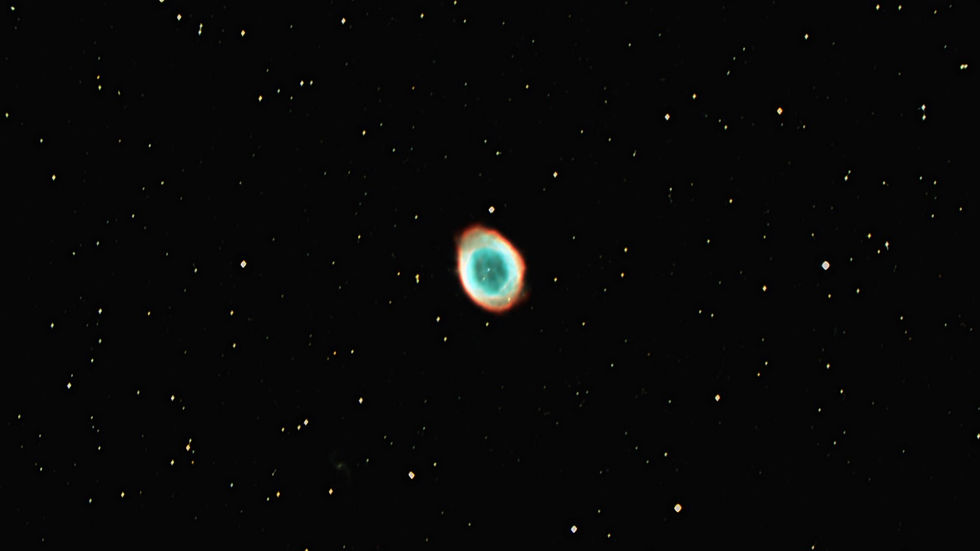The Ring Nebula is an object people view through large telescopes. I recall seeing it at a public viewing night several years ago, before I took up astrophotography as a hobby. I remember seeing a ring, but I can’t recall if I saw the colours. In any case it was very memorable.
Wikipedia describes it as follows: "The Ring Nebula (also catalogued as Messier 57, M57 and NGC 6720) is a planetary nebula in the northern constellation of Lyra. Such a nebula is formed when a star, during the last stages of its evolution before becoming a white dwarf, expels a vast luminous envelope of ionized gas into the surrounding interstellar space."
This target is small in apparent size (4 arcmin across), so much so that my normal telescope isn’t very well suited to viewing it. Since I had changed scopes to do planetary imaging I thought I’d take a look at the Ring.
I’m very happy with this image, which took a bit of work to bring out the ring without massively bloating all the stars. I have a few tricks up my sleeve for this.

Image 1: Ring Nebula, M57, observed at Lac Teeples on October 1, 2023. On-screen SharpCap capture.
The image above began as a “capture” from the image capture software. It is a stack of a very large number of subframes and I cleaned it up quite a bit.
The image below was created by my normal method of stacking the data after the image capture is complete. In some ways it is not as good as the first image, contrary to my expectations. The second image probably has better colour balance but it is nearly saturated in the centre. A bit of effort might improve it, but I’m happy with the first version and I'll stop with this.

Image 2: Ring Nebula, M57, observed at Lac Teeples on October 1, 2023. Stacked using DeepSkyStacker and then processed.
Images captured at Lac Teeples on October 1, 2023. Camera was the ZWO ASI-6200MC, Telescope was the antique 14” Celestron SCT. No filters used.

Comments